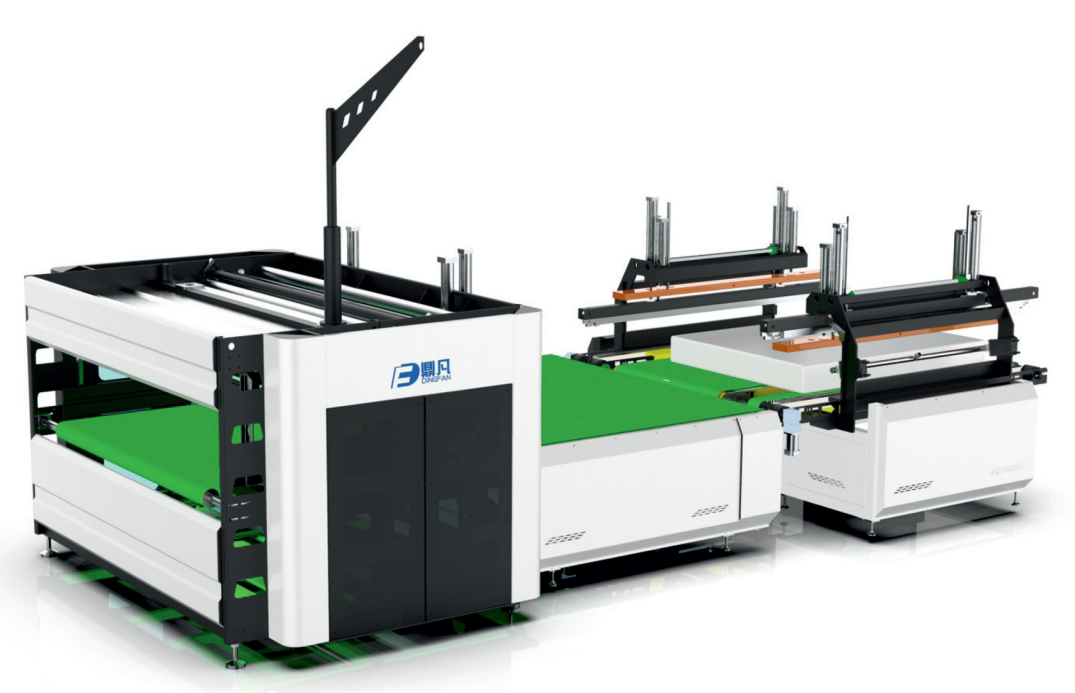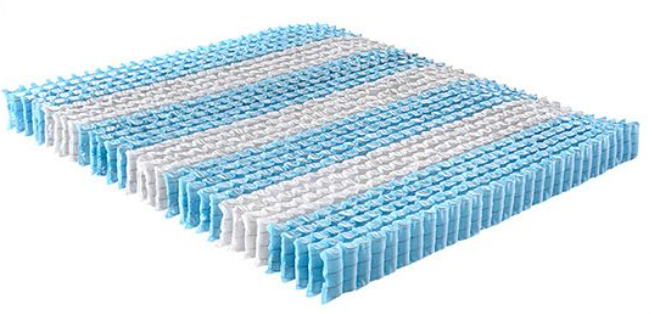
If you’re struggling with low production speed, high labor costs, or unstable product quality, the real issue might be your mattress machinery.
To choose the right mattress machinery, you need to align your selection with your production needs, budget, quality expectations, and automation goals.
This guide will help you understand how to evaluate and select the best mattress machinery for your factory. We’ll go beyond basic specs to cover quality, automation, safety, energy efficiency, and long-term ROI.
What types of mattress machinery are there?

Many factories fail to scale because they underestimate the complexity and variety of mattress machinery.
Mattress machinery can be divided into several categories: quilting machines, foam cutting machines, spring machines, and packaging lines. Each type supports a key part of production.
Quilting Machines
These machines sew together fabric and foam to form the mattress top panel. Models range from basic to fully automatic with pre-set patterns.
Foam Cutting Machines
CNC and hot wire cutters are used to shape foam precisely. Good cutting improves uniformity and minimizes waste.
Spring Coiling and Bagging Machines
Spring coiling machines form the inner support system. At our factory, we manufacture high-speed pocket spring machines capable of 130–220 springs per minute, with spec switching in minutes.
Adhesive and Assembly Machines
We offer both semi- and fully automatic glue machines. These apply adhesive evenly to layer materials together, improving bond strength and reducing manual labor.
Mattress Packaging Machines
These machines compress, seal, and roll the finished mattress. Our DF-X03 model integrates folding, compressing, and rolling in one—packing one unit every 30 seconds.
How do I know what production capacity I need?
Scaling up blindly often leads to overinvestment or machine bottlenecks.
Start by mapping current production, forecast future growth, and then match machinery throughput to your peak demand needs.
Evaluate Current Output
For example, if you’re producing 500 mattresses/day with 2 shifts, your equipment should support that comfortably. Use your slowest machine as your baseline bottleneck.
Factor in Growth
If you’re planning to enter new markets (say, Eastern Europe or Southeast Asia), you’ll likely need 30–50% extra capacity. Build that into your plan now.
Example Table – Matching Needs to Output
| Production Plan | Ideal Machine Speed | Suitable Models (from our line) |
|---|---|---|
| 300 units/day | 10s/cycle | DF-J01 (automatic roller) |
| 500 units/day | 5–8s/cycle | DF-X03 + DF-J03 combo |
| 1000 units/day | <5s/cycle | DF-X16 full production line |
How can I tell if a machine is high-quality and durable?

A good machine lasts for years. A bad one breaks in weeks. How do you know before buying?
Check the build materials, core components, wear parts list, and vendor credibility. Request videos, test runs, or factory visits.
Key Build Features to Watch
- Frame material: We use Q345 carbon steel or stainless steel for high-load parts.
- Bearings and motors: Only high-end brands like NSK, Schneider, or Omron.
- Surface treatment: Powder coating or spray-painting prevents corrosion.
Maintenance Overview
| Wear Part | Lifespan (avg) | Notes |
|---|---|---|
| Forming blades | 3–6 months | Replace based on usage |
| Conveyor belts | 12–24 months | Check monthly for cracks |
| Guide rails | 6–12 months | Lubricate every 2 weeks |
We provide a detailed wear-part checklist and suggest maintaining every 3–6 months based on operating hours.
What automation and smart features should I look for?
Too many factories still run on semi-auto machines that waste labor and limit consistency.
Today’s best machines feature PLC control, automatic error detection, and recipe memory functions.
What Our Machines Include
- PLC + HMI touchscreen: multilingual, intuitive interface
- Servo motors: precise bag alignment, spring tension control
- Error detection: empty springs, misalignment, bag tension issues
- Spec memory: store dozens of spring/bagging settings for fast changeover
Optional Upgrades
- Remote monitoring & diagnostics
- ERP/MES compatibility
- AI-based performance tuning
If you’re operating at scale or switching specs frequently, smart control isn’t optional—it’s critical.
What should I expect in terms of cost and ROI?
If you’re only comparing prices, you’re missing the full picture.
Your real cost includes energy use, labor savings, maintenance, and productivity.
Basic Cost Ranges
| Machine Type | Price (RMB) | Ideal For |
|---|---|---|
| Semi-auto bagging/gluing | ¥100,000–¥300,000 | Small factories, stable specs |
| High-speed spring machines | ¥300,000–¥700,000 | Mid-size, growing demand |
| Full auto production lines | ¥800,000–¥1,500,000+ | High-volume export factories |
Annual Running Cost Estimate (example: DF-X03)
| Cost Item | Estimate (RMB/year) |
|---|---|
| Electricity | ¥20,000 |
| Maintenance | ¥10,000 |
| Labor (1 person) | ¥120,000 |
| Parts and others | ¥10,000 |
| Total | ~¥160,000 |
Many of our clients recover equipment investment in 1–1.5 years through improved efficiency alone.
How do I choose a trustworthy supplier?
B2B platforms are flooded with vendors. But not all factories are what they seem.
Vet your supplier by verifying licenses, certifications, past projects, and technical capacity.
What We Recommend You Ask
- Do they have ISO or CE certifications?
- Can they show videos or arrange live demo calls?
- Do they have local service partners or remote support?
Red Flags
- Prices too good to be true
- No customer case studies
- Refusal to show factory or offer sample runs
We’ve exported to Europe, Southeast Asia, and Russia, and are happy to share verified buyer references.
What safety and compliance features should I check?
No machine should risk your workers’ safety or your factory’s compliance status.
Look for features like interlock doors, emergency stop buttons, overload protection, and CE/UL marks.
Key Safety Features We Build In
- Emergency stops at every operator point
- Guarding around forming and sealing zones
- Overload protection for motors
- CE certification (Europe), UL compliance (North America)
We also offer free safety training materials for your operators.
Can I customize the machine to fit my production?
Every mattress line is different. One-size-fits-all machines rarely fit well.
Choose machines with adjustable specs and flexible controls. We offer modular upgrades to expand functionality.
Customization Options Available
- Adjustable spring diameter, height, and wire thickness
- Variable bag size and folding settings
- Remote parameter tuning
- Additional sealing/folding modules
We support both spec-based and functional custom orders. Tell us your product range, and we’ll configure accordingly.
What about energy consumption and green compliance?
Energy bills add up quickly, especially in hot climates or large factories.
Energy-efficient machines with servo motors, variable speed drives, and smart logic can save you 20–30% on power.
Our Features Include
- Servo-driven systems with energy-saving standby mode
- Low-noise motors to reduce factory sound levels
- Compressing systems that require lower air pressure
If you need help estimating yearly electricity cost for a machine model, we’ll calculate that for you.
Conclusion
Choosing the right mattress machinery isn’t about the cheapest price—it’s about speed, reliability, flexibility, and long-term value.
Get in touch with us for tailored solutions! We look forward to collaborating with you and shaping a brighter future together!
📞 | WhatsApp:+86 15220512074
📧E-mail:zhongliantec@gmail.com
Web | Link:mattressmachineryzl.com
